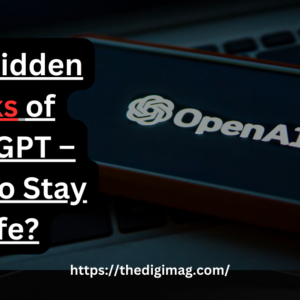Understanding how to read people is an invaluable skill, whether you’re navigating business negotiations, building stronger relationships, or just satisfying your curiosity about what someone’s body language or verbal cues reveal. Evy Poumpouras, a former Secret Service agent, polygraph expert, and author of Become Bulletproof, shares practical techniques for decoding body language, spotting deception, and identifying truthful behavior.
Let’s break down her expert advice and learn how to become a human lie detector.
1. The Power of Listening: Get a Baseline First
The first step in reading people isn’t about what you say—it’s about listening and observing. Poumpouras emphasizes the importance of establishing a baseline for the person you’re interacting with. Everyone has different habits and body language quirks, so identifying their normal behavior is key.
Key tip: Ask open-ended questions and give people room to talk. For example, instead of asking a yes/no question, say, “Tell me about that.” Then, observe their natural responses.
“When you stop talking and start listening, you can get a better sense of who someone really is,” Poumpouras advises.
2. Body Language: What to Watch For
Body language plays a crucial role in understanding someone’s true feelings. While it’s not an exact science, certain patterns can signal discomfort, dishonesty, or nervousness.
Signs to Watch:
- Fidgeting or Grooming Movements: Twisting hair, playing with clothes, or smoothing a beard can indicate nervousness.
- Frozen or Stiff Body Language: If someone becomes unusually rigid while talking, it could be a sign they’re lying or overwhelmed.
- Eye Contact Changes: Breaking eye contact may suggest deception, but not always. Some people are skilled liars who maintain steady eye contact, which is why understanding their baseline is critical.
- “Deer in the Headlights” Look: When someone’s eyes widen noticeably, it can indicate shock, surprise, or discomfort.
Pro Tip: Always ask yourself why someone’s body language changes suddenly. What caused the shift in behavior?
3. Spotting Verbal Cues of Deception
While body language is important, verbal cues can provide even stronger indicators of deception. Poumpouras highlights several speech patterns to watch for when identifying a lie:
Common Verbal Signs:
- Switching Verb Tenses: If someone changes from past tense to present tense mid-story, they may be fabricating details.
- Example: “I went to the store… and then I go to the park.”
- Answering a Question with a Question: This is often a stalling tactic.
- Example: “Who, me? Where did I go last night?”
- Speaking in Third Person: Referring to themselves in the third person creates emotional distance from the situation.
- Example: “Evy would never do that.”
- Insulting Your Intelligence: When someone gets defensive or tries to make you feel foolish for asking a question, it could be an attempt to shut you down.
- Example: “That’s a ridiculous question!”
ADVERTISEMENT
4. How to Spot the Truth
Interestingly, it’s easier to spot the truth than detect a lie. According to Poumpouras, truthful people often make spontaneous corrections or add unnecessary complications to their stories—details that liars usually avoid.
Truth Indicators:
- Spontaneous Corrections: Truthful people often correct themselves naturally.
- Example: “I saw Mom, then I talked to Dad. No, wait, I talked to Dad first.”
- Quotations: When someone quotes another person directly, it’s often a sign of truthfulness.
- Example: “He said, ‘I’m going to be late.’”
- Adding Complications: If someone shares an overly detailed story that includes complications (like breaking a heel while running for the bus), it’s more likely to be true.
- Accessing Feelings at the End: Genuine stories often conclude with an emotional reflection, such as, “I felt really bad afterward.”
5. Reading People Improves Relationships and Builds Trust
Poumpouras stresses that reading people isn’t just about catching lies—it’s a skill that helps you build stronger relationships and connect on a deeper level. When you understand someone’s true feelings, you can respond more empathetically and strengthen your bond.
“When you create space for people to reveal themselves, they will show you what’s really going on,” she explains.
Concluding Remarks: Mastering the Art of Reading People
Becoming skilled at reading people takes practice, but the benefits are well worth it. By learning to decode body language, spot verbal cues, and identify truthful behavior, you’ll be able to navigate social situations with greater confidence and clarity.
So, next time you’re having a conversation, put these techniques to the test. Whether it’s with friends, colleagues, or family members, you’ll quickly see how much people reveal—often without realizing it.
Source Acknowledgement: unsplash.com
Suggested Reading: How to Become a Human Lie Detector




